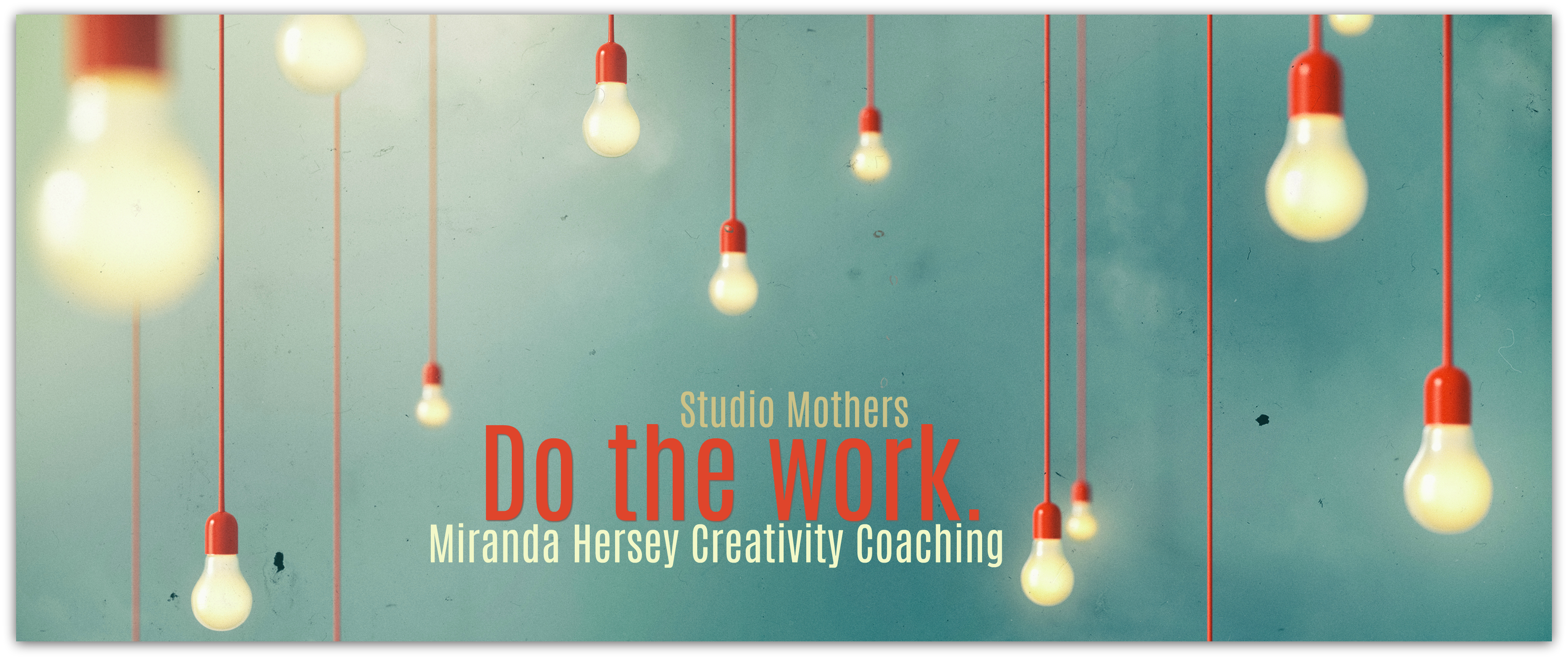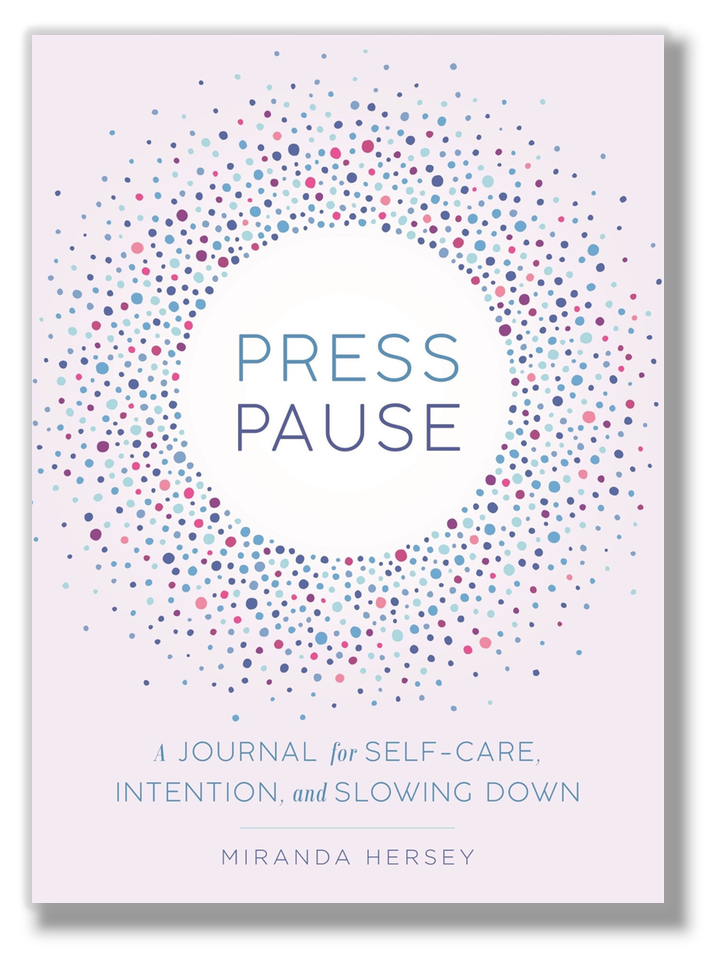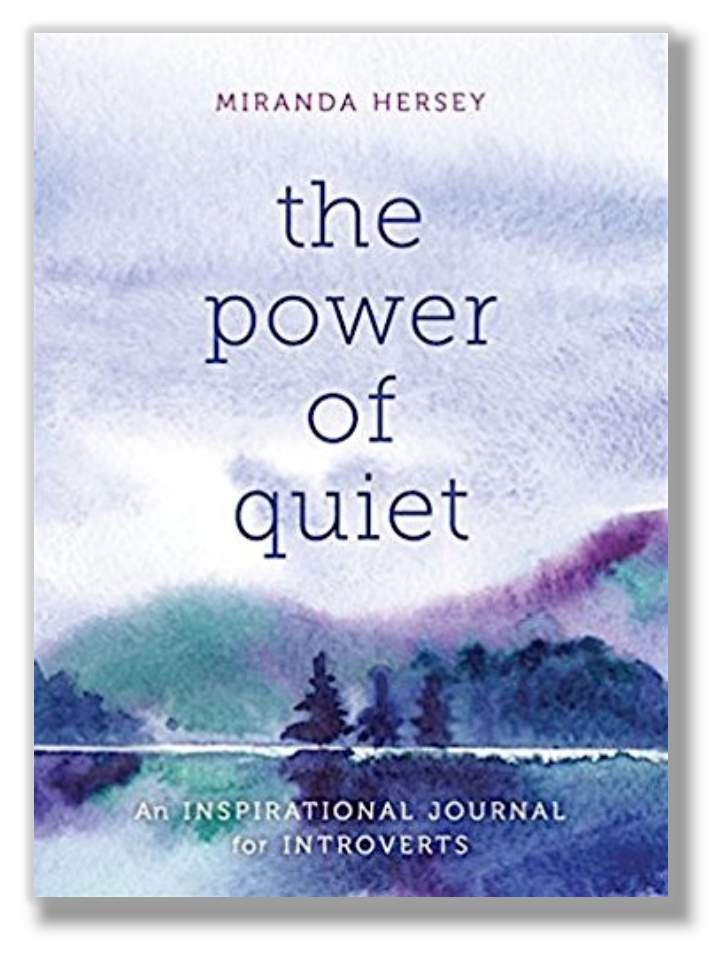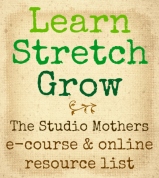How to Start Creating Again After Kids

Emily Bennett
By Emily Bennett
It was about two weeks after my son was born when I said to my husband, or maybe I wailed, “I am going to have to do something because this is SO HARD!”
Two weeks into motherhood and I was a poop-covered, milk-soaked, tear-stained, sleep-deprived mess. And I was losing it.
Before Babies
I always knew I wanted to be a mom someday. I always loved kids. They are pretty much the best humans, as far as I can tell.
I was always an artist as well. At the age of 5, I made the world’s smallest quilt — 3” by 3” in size. As a tween, I painted an ocean mural on my bedroom walls, including a cartoon octopus using each arm for a different beauty tool: comb, brush, lipstick, hair dryer. Just because. You know? In college, I studied art and made these drippy paintings of clothing on lines and hangers. Creativity always came easily.
But then I graduated from college. No more deadlines, no more critique groups, no more assignments to keep me working. That childhood spontaneity to just create was somehow gone. Huddled alone in my freezing garage studio rigged up with clamp lights and space heaters, I couldn’t help but wonder what on Earth I was doing.
Also, life demanded practicality. I needed health insurance. I needed a savings account. I needed to have a “real” job. So, I got busy being practical; I became a teacher. That channeled my love of young children, so it was good. And I had a steady paycheck, and I met my husband and got married and bought a house and had stability and all the things.
And I stopped making art. I gave up my studio. I might have even have told people that I was done with all of that.
Time Plus Suffering
Then I gave birth. I quit my job to be with my son, and faster than you can say, “post-partum depression,” I was in the middle of the darkest time in my life. My son didn’t sleep, or, if he slept, I couldn’t sleep. He had reflux. He wouldn’t nurse. He wasn’t gaining weight. We didn’t know what was wrong. My son and I spent days just bouncing on the yoga ball waiting for my husband to come home. It was mind-numbingly, bone-crushingly hard.
 Don’t get me wrong, I wanted to be with my son. I feel immensely privileged to get to spend time with my children. What emerged in that period was not just an over-abundance of time, but also the deep personal necessity to DO SOMETHING.
Don’t get me wrong, I wanted to be with my son. I feel immensely privileged to get to spend time with my children. What emerged in that period was not just an over-abundance of time, but also the deep personal necessity to DO SOMETHING.
An Idea
As the darkness lifted, I started to look around. I was bugged by how baby clothing is so stuck on gender stereotypes. I didn’t want to put my son in the “Mr. Tough Guy” onesie. Sitting around at a moms’ group with my friends, I said, “I want to put a dump truck on a pink onesie. What do you think?” And they said, “YOU SHOULD DO IT!”
That rallying cry fueled my desire to create. I began to draw again — teaching myself how to use drawing software, learning how to screen print from YouTube tutorials. I started to put my hands on fabric and ink and make something new. And it was awesome. It was a deep and rushing joy that I had forgotten existed.
More Than Just Time
Now that I have two children and a growing business, there’s hardly a moment to spare. I look back on my practical, pre-kid life and think, “I had so much time! Why didn’t I spend it creating!!??”
Before children, I had vague ideas of art I wanted to make but nothing I truly felt passionate about. With the dump truck project, I had an idea that brought together my love of children, textiles, and graphic design.
There was one more thing missing, though.
I needed more than just time to explore a project. I needed an avenue for sharing my work with others.

Within my group of new mom friends was a creator who helped me find my way. She made artisan bath products, and she knew all the things: how to sell at the farmer’s market, open an Etsy shop, and aesthetically arrange her wares in lovely piles on a folding table. She introduced me to a new world: the world of selling your stuff.
In all my time in critique groups and art classes, I was never taught how to bring my artwork to others outside of a school context. In my friend’s example, I saw how it was possible. She taught me the nuts and bolts of being in business (business license, sales tax, etc.) and I’m not sure my nascent creative practice would have taken hold without her help.
Suddenly, I had a critique group again (customers) and I had deadlines (holiday bazaar), and those two motivated me to Go and Do in a way I had not gone and done since college.

I didn’t set out to create again, it kind of just happened when time met passion plus an outlet for sharing my work with others. This experience has brought me back to a part of myself and an understanding of how to have a creative practice that I hope to never lose again.
Advice to You, Artist Mama Who Wants to Get Back to Making
1) Make time.

How do we find time as moms? For me it happened because I chose something I could work on while my son was with me. What can you do while your kids are with you? What other dedicated time can you create? If you have the means, give yourself permission to hire a babysitter regularly. Schedule with your partner 30 minutes every evening. Can you cut back at work? Start looking for the little moments. I almost always work sitting perched on the toilet while my kids are in the bathtub. (At right: Me sitting on top of the couch to work with my son in the room — without him being able to bang on the computer.)
2) Decide what you’re passionate about.
If you want to get back to creating, then you probably have your passion in mind. What does that look like? What do you want to say to the world? Put it down on paper! Tell someone! Something is there that you want to bring forth. You have a need, and it is such a precious thing! Cradle it in your hands as it begins to grow.
3) Find a way to share your work with others.
If you don’t have an awesome friend like mine, look up local art festivals in your area. Sign up! Don’t worry, because you will get in and you will sell things. Go visit local maker fairs to get inspired. Create your own free website, and then tell everyone that you did it! Share the link on your personal Facebook page. Check out local entrepreneurial resources. Sign up for a class on business basics. But most importantly, sign up! Go and do it. Once you have done one thing, sign up for another. Incorporate the feedback you get into your work for the next event. Make sure that sharing, scary as it is, becomes part of your regular regimen, so that your awesome creativity is getting out to the world and you have a reason to keep creating.
About Emily Bennett

Emily Bennett is the owner and creator of Baby Blastoff!, a line of baby clothing that honors the spirit and possibility in every child. She grew up in Portland, Oregon, and went to Whitman College, where she studied studio art. After graduating, she moved to New Mexico where she earned a master’s in education at the University of New Mexico. Emily came back to creating and started her business after her son was born in 2011. She lives in Albuquerque with her husband and two kids.
Connect with Emily! Find Emily’s awesome baby clothes at babyblastoff.com. Follow her on Instagram at @babyblastoff and on Facebook at facebook.com/babyblastoff.
:::::

























